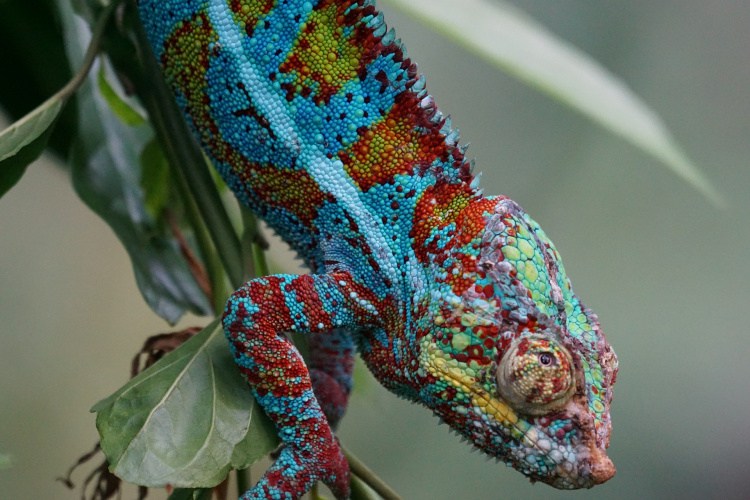The animal kingdom’s colour changers – most notably chameleons and squid – deploy cellular mechanisms to adapt their appearance to blend in with their surroundings and signal to other creatures. This trick has been keenly sought for many years by humans for similar purposes.
Now, a team from Cambridge University’s Cavendish Laboratory claim to have achieved this goal by making artificial chromatophors: the specialised cells in the skins of colour changing animals.

In squid and chameleons, chromatophors are skin cells containing fibres that can expand and contract to move pigments around. When the fibres are squeezed together, the cells are transparent; when they are spread apart, the pigment’s colour shows through. In the Cambridge team’s cells, light-activated nano-mechanisms perform the role of the contractile fibres.
In a paper in Advanced Optical Materials, Andrew Salmon, Sean Cormier and colleagues describe how they coated minute particles of gold in acrylic polymer shells, and then squeezed these coated particles into micro-droplets of water suspended in oil. Key to the mechanism is that the polymer coatings can store and expel water. Below the trigger temperature of 32°C, the coatings expel all the stored water and collapse, which has the effect of forcing several nanoparticles to cluster tightly together. Dropping the temperature makes the polymers take on water and expand, forcing the clusters to break apart.
"Loading the nanoparticles into the microdroplets allows us to control the shape and size of the clusters, giving us dramatic colour changes," said Salmon, the study's co-first author.
The geometry of the nanoparticles when they bind into clusters dictates the colour of the material. When they are spread apart, the material appears red; when pressed together, it appears blue. At the moment, the team has only constructed material with a single layer of “cells”, so it can only change to a single colour. They hope to use a variety of nanoparticle materials to make extra layers, forming a material that could change colour dynamically, like real chameleon skin.
The researchers have also observed that shining light onto the material makes the nanoparticles “swim”, with different light intensities causing different behaviour.
"This work is a big advance in using nanoscale technology to do biomimicry," said Cormier. "We're now working to replicate this on roll-to-roll films so that we can make metres of colour changing sheets. Using structured light we also plan to use the light-triggered swimming to 'herd' droplets. It will be really exciting to see what collective behaviours are generated."




Poll: Should the UK’s railways be renationalised?
I think that a network inclusive of the vehicles on it would make sense. However it remains to be seen if there is any plan for it to be for the...